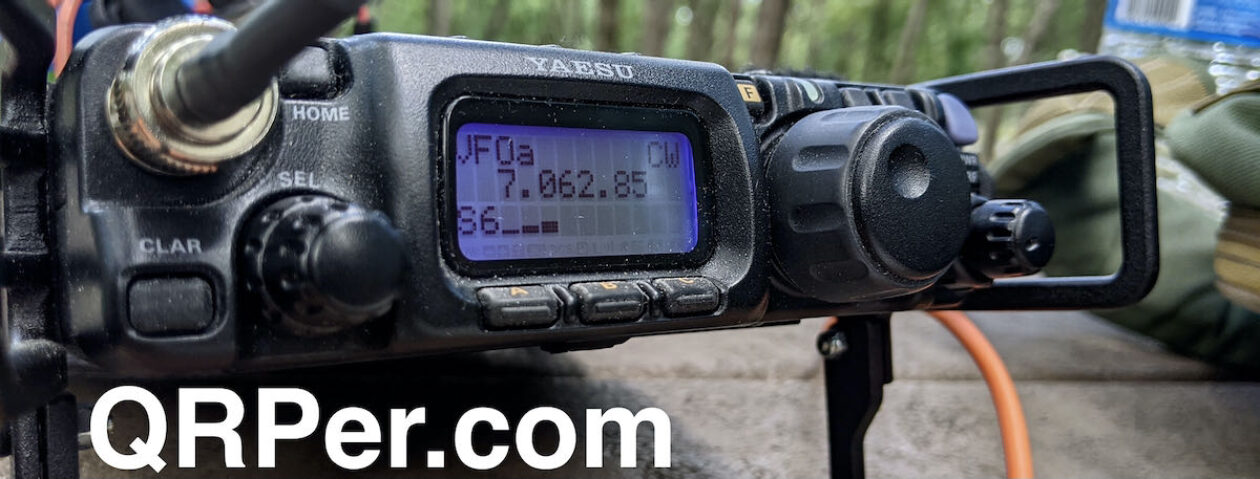 I love testing new stuff in the field and on Tuesday, May 2, 2023 I had a great opportunity to test a number of new items.
I love testing new stuff in the field and on Tuesday, May 2, 2023 I had a great opportunity to test a number of new items.
FT-818ND Upgrades
 I mentioned in a previous post that I purchased a new Yaesu FT-818ND from DX Engineering on December 28, 2022. It smacked of an impulse purchase only in that I had not planned to purchase the radio that very day.
I mentioned in a previous post that I purchased a new Yaesu FT-818ND from DX Engineering on December 28, 2022. It smacked of an impulse purchase only in that I had not planned to purchase the radio that very day.
Thing is, Yaesu announced they were discontinuing the FT-818 and I always planned to purchase one to replace out one of my two FT-817NDs. I didn’t want to miss the opportunity to buy a new one under warranty, so I bit the bullet on short notice.
Within a few days of purchasing the FT-818ND, I also purchased another 500 kHz CW filter, a WINDCAMP 3000mAh LIPO battery and a WINDCAMP Anderson PowerPole Adapter.
I planned to make the FT-818ND my primary HF radio and use the other FT-817(s) for full duplex satellite work (and HF too, of course, especially since one is now in a TPA-817 pack frame).
I had all of the upgrades in hand by mid-February, but that Yaesu FT-818ND sat in its box under my radio bench until late April. I was so busy evaluating other gear and keeping up with my busy family life, it had almost slipped my mind. Well, that and I received the incorrect narrow Collins filter from a seller on eBay; instead of sourcing a replacement, I decided to steal an original 500 Hz filter from one of my other radios while waiting on a replacement.
Those narrow Collins filters? They’ve become pure unobtainium over the past couple of months. At one point, eBay was chock full of them. No longer…
It had actually been a very long time since I pulled out a brand new (non-loaner) radio from the box. It’s funny because I remember opening my first FT-817 back in…what…2001? The box and packaging were identical some twenty one years later!
I unboxed then immediately opened the chassis of the FT-818ND to add the Collins filter, attach my Portable Zero side rails (stolen from my FT-817), add the Windcamp battery pack, and add the Windcamp Anderson PP adapter.
JNCRadio CS-818 ATU
 Around the same time, Jesse, with Chelegance, also sent me his latest ATU: the CS-818 which is specifically designed to work with the FT-817 and FT-818 series radios. To be clear, Jesse sent the MC-818 at no cost to me to evaluate.
Around the same time, Jesse, with Chelegance, also sent me his latest ATU: the CS-818 which is specifically designed to work with the FT-817 and FT-818 series radios. To be clear, Jesse sent the MC-818 at no cost to me to evaluate.
The CS-818 actually works with any radio, but it ships with the command cable for the FT-817/818 for full integration.
The CS-818 can handle up to 30 watts of power, so it’ll pair nicely with any QRP radio. If using it with a QRO radio, you’d have to be very careful not to push more than 30 watts.

In truth, ATUs don’t get me terribly excited. I’m quite content with my Elecraft T1 and Emtech ZM-2; these two portable ATUs match anything and everything I use in the field. Continue reading POTA QRP: Testing the new JNCRadio CS-818 ATU with my upgraded Yaesu FT-818ND










































